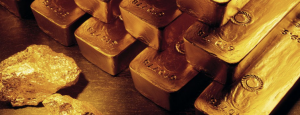Are precious metals good for retirement?
When pondering the realms of wealth preservation and investment growth, particularly as one approaches the golden years, the mind often meanders through a myriad of traditional and alternative assets. Stocks, bonds, real estate, and mutual funds might be the conventional darlings of retirement portfolios, but have you ever considered the enduring allure of precious metals?
The Silent Storyteller: History
Let’s journey back in time, and not just a couple of decades but millennia. One thing remains evident – civilizations, whether it be the Egyptians with their glorious pyramids or the Romans with their sprawling empire, held precious metals, especially the lustrous yellow one, in high regard. These weren’t merely ornamental or symbolic – they were (and still are) a solid representation of wealth, status, and, most importantly, economic stability.
Diversification – The Not-so-secret Weapon
The concept of diversification isn’t new. Aristotle himself, around 350 BCE, was quoted saying, “The most certain way of succeeding is to try just one more time.” In modern financial parlance, we might translate this as, “Don’t put all your eggs in one basket.”
The logic is simple yet profound. While modern financial markets offer a plethora of investment vehicles, they also come packaged with volatility. The 2008 financial crisis or the dot-com bubble are but mere examples. Precious metals, however, tend to have a negative correlation with stocks and bonds. When equities go south, metals like our ever-glowing yellow friend often trend north, acting as an effective hedge against market downturns.
Intrinsic Value and Finite Resources
The universe of investments can be quite perplexing. One day, a particular stock is the market’s darling, and the next, it plummets to an abyss of obscurity. But there’s an inherent attribute in precious metals that shields them from such erratic behavior: their intrinsic value.
Unlike fiat currencies, which governments can print ad infinitum, the amount of precious metals on Earth is finite. This limited supply, paired with the ever-growing demand due to industrial applications and investment interests, creates a bullish premise for value appreciation over extended periods.
Immunity to Default
Let’s don a hypothetical hat. Imagine if a prominent company declares bankruptcy or a country defaults on its debt. Holders of their bonds or equities might find themselves in financial dire straits. Precious metals, however, don’t owe anyone anything. They don’t have liabilities. They stand tall and resplendent, irrespective of economic downturns or corporate meltdowns.
Tangibility in an Increasingly Digital World
As the world spirals more into the digital abyss with cryptocurrencies and virtual assets becoming commonplace, there remains an undeniable comfort in holding tangible assets. Precious metals, with their palpable presence, offer that very solace. They can’t be hacked, deleted, or duplicated. They sit securely, gleaming with the promise of value preservation.
But… Are There Any Clouds on This Silver Lining?
Of course, like all investment avenues, precious metals aren’t exempt from certain vulnerabilities.
Lack of Passive Income
Unlike dividend-yielding stocks or interest-generating bonds, precious metals are inert. They don’t pay dividends or interest. Their value proposition lies in capital appreciation, which might not align with everyone’s retirement strategy, especially those looking for periodic income.
Storage and Security Concerns
Possessing tangible assets also means grappling with storage and security. While safety deposit boxes and vaults are solutions, they come with associated costs. Moreover, should you choose to liquidate, the process might not be as swift as selling equities or bonds.
Concluding Thoughts
So, are precious metals good for retirement? Like all intricate tapestries of investment wisdom, the answer isn’t monochromatic. They offer robust value preservation, diversification, and a shield against economic vagaries. However, they also come with their set of challenges.
It’s essential to weigh these pros and cons, perhaps even consulting with an experienced financial advisor (or two). But remember, in the vast cosmos of retirement planning, diversification remains paramount. And what better way to diversify than with assets that have shimmered through millennia of economic upheavals?
Thus, while it might not be prudent to stake your entire retirement on them, allocating a portion of your portfolio to precious metals could indeed be a decision worth its weight in gold.…
 Beyond the Shine – Gold’s Modern Investment Landscape
Beyond the Shine – Gold’s Modern Investment Landscape
 Gold is also viewed as a currency, but when it comes to price discovery, Gold is not considered a currency in the traditional sense. Gold has distinct advantages over other currencies, leading many countries to adopt Gold as their official currency. The value of Gold used for money originated during the time of the Egyptian Pharaohs, and primitive civilizations began using Gold for trade during this period. The Egyptians used Gold as an alternative currency for trade during this period. However, it was not until the American Civil War that Gold became a recognized currency in the United States.”
Gold is also viewed as a currency, but when it comes to price discovery, Gold is not considered a currency in the traditional sense. Gold has distinct advantages over other currencies, leading many countries to adopt Gold as their official currency. The value of Gold used for money originated during the time of the Egyptian Pharaohs, and primitive civilizations began using Gold for trade during this period. The Egyptians used Gold as an alternative currency for trade during this period. However, it was not until the American Civil War that Gold became a recognized currency in the United States.” bars come in various weights and can be purchased in increments of 1oz through 10 ounces. Investors can also invest in gold bullion in coins and ingots. This investment method is convenient since investors have the flexibility to purchase their yellow metal in whatever amount they choose.
bars come in various weights and can be purchased in increments of 1oz through 10 ounces. Investors can also invest in gold bullion in coins and ingots. This investment method is convenient since investors have the flexibility to purchase their yellow metal in whatever amount they choose. useful for coating electrical wires and connectors. This prevents corrosion and further damage to the cables inside the connectors. This is important for most electronics and costly medical devices. Another important use of gold in electronics is in integrated circuits. Integrated circuits are a vital component of almost all electronics. They allow computers to store and process large quantities of information, control and monitor advanced machines, and perform other valuable tasks. Some of the gold in electronics is used to create contacts that allow circuits to be connected.
useful for coating electrical wires and connectors. This prevents corrosion and further damage to the cables inside the connectors. This is important for most electronics and costly medical devices. Another important use of gold in electronics is in integrated circuits. Integrated circuits are a vital component of almost all electronics. They allow computers to store and process large quantities of information, control and monitor advanced machines, and perform other valuable tasks. Some of the gold in electronics is used to create contacts that allow circuits to be connected.